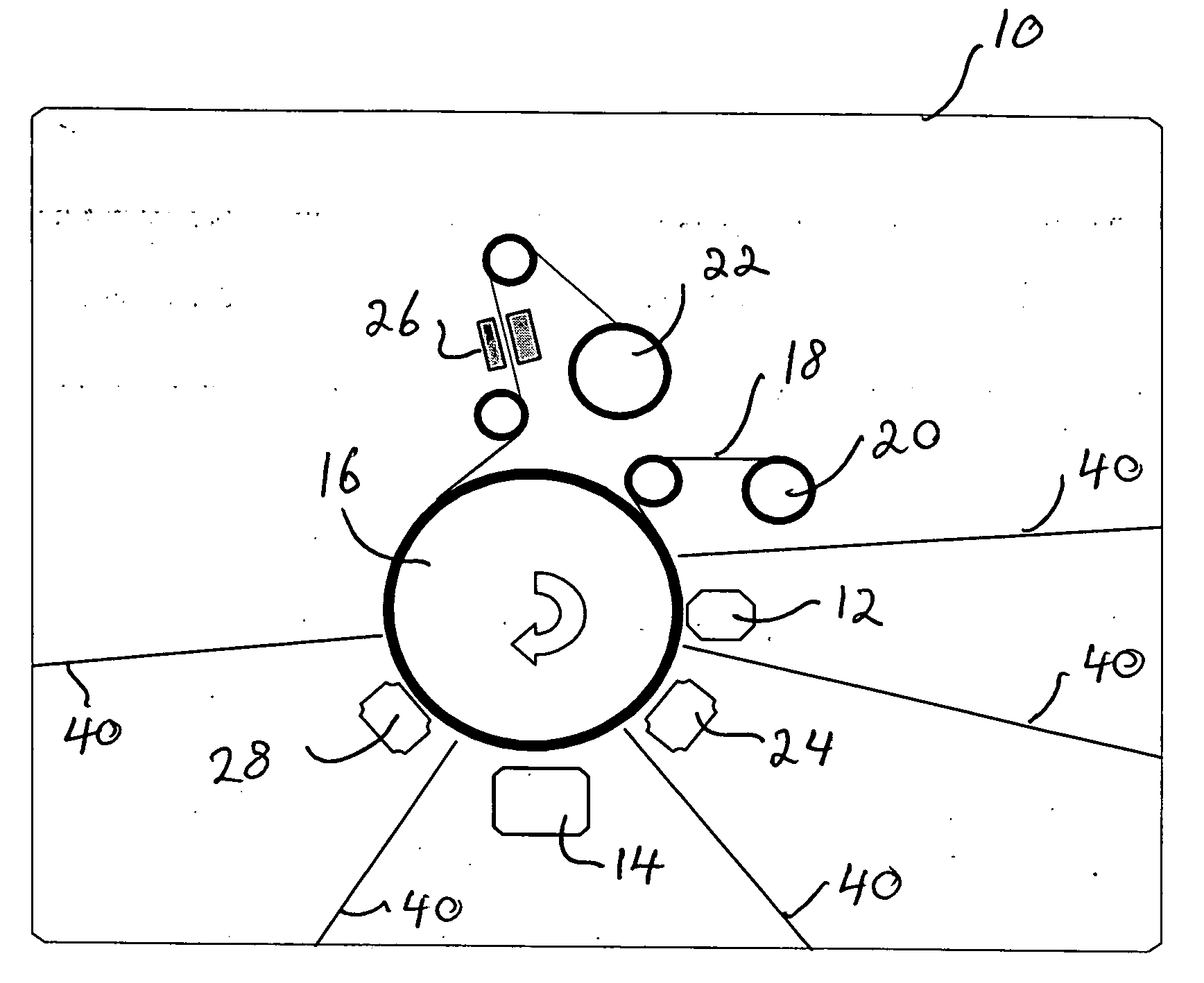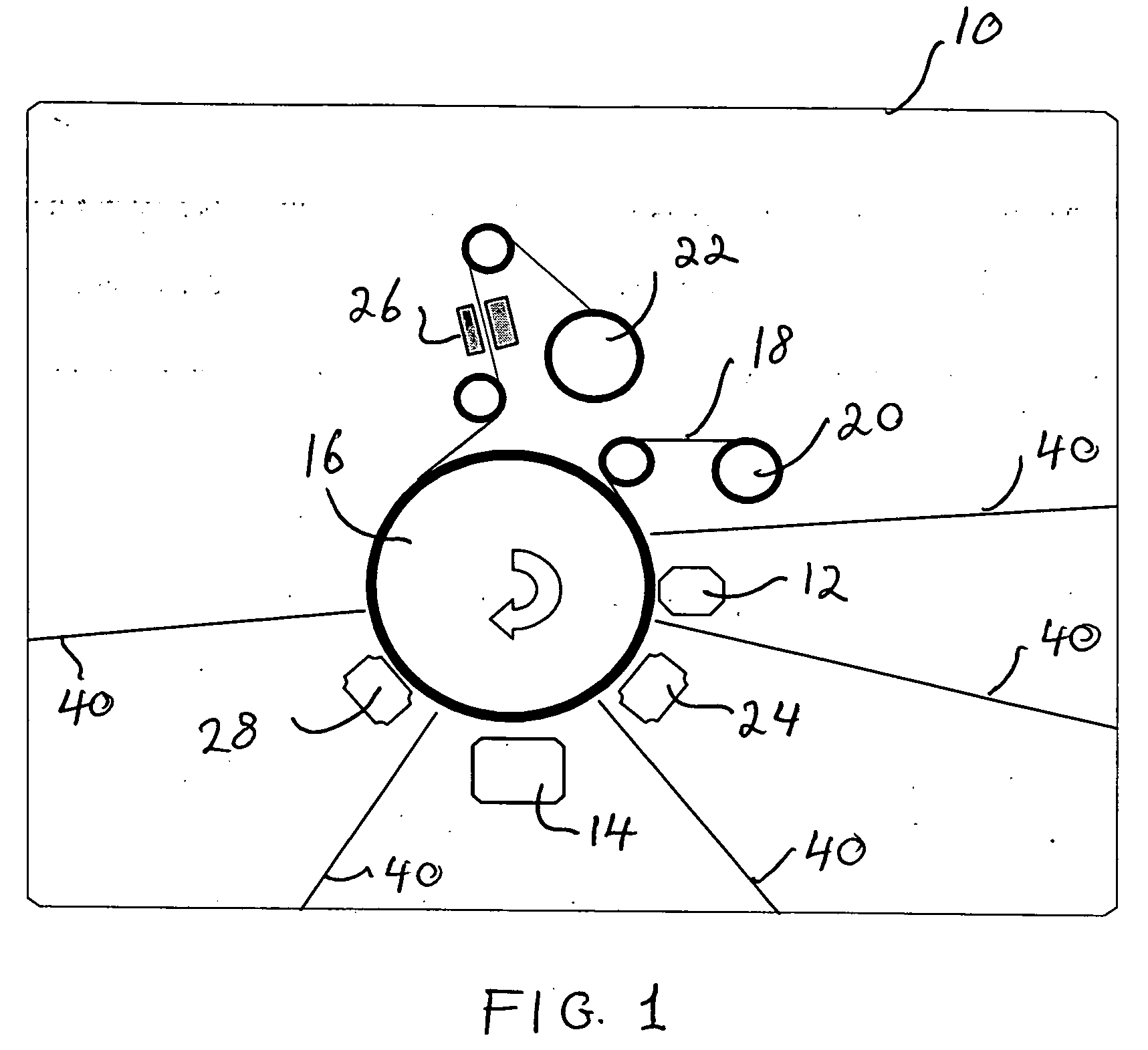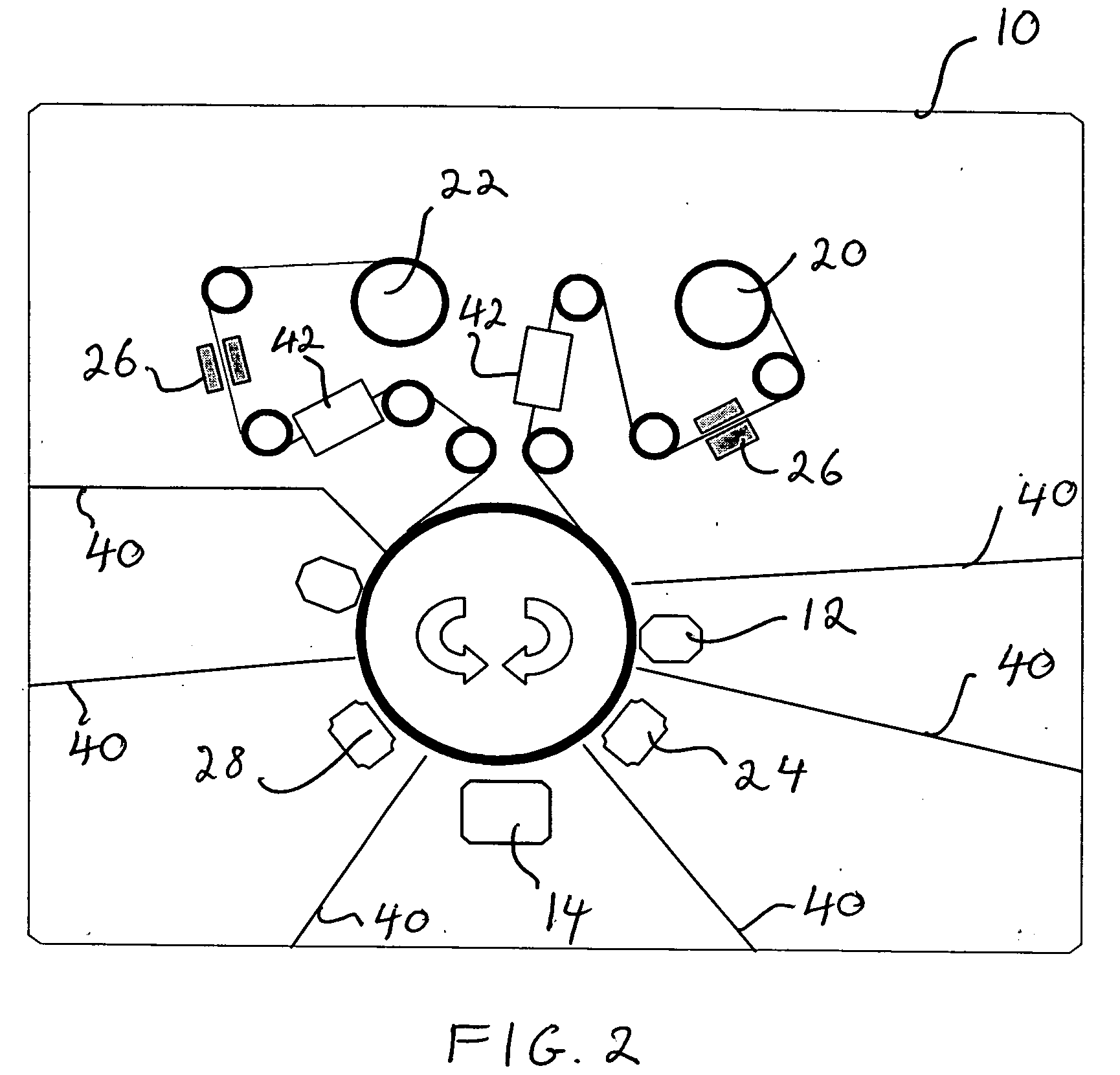Ultra-bright passivated aluminum nano-flake pigments
a passivating, aluminum nano-flake technology, applied in the direction of non-metal conductors, applications, instruments, etc., can solve the problems of reducing the brightness and useful life of reflective aluminum flakes, noticeable deterioration in the integrity of flakes, and deterioration of aluminum layers immediately, so as to prevent subsequent deterioration of films, improve the conductivity of inks and paints incorporating such flakes, and optimize the flatness and corresponding optical and electrical properties
- Summary
- Abstract
- Description
- Claims
- Application Information
AI Technical Summary
Benefits of technology
Problems solved by technology
Method used
Image
Examples
example 1
Non-Polymeric Release Material
[0060] A paraffin wax from Aldrich Chemical Company of Milwaukee, Wis., was melted at 80° C. and injected into a 10−3 to 10−6 torr vacuum chamber (operated at about 10−4 torr) to be flash-evaporated at about 300° C. The formed vapor, driven by vacuum, was passed through a slit nozzle from the evaporating area to a deposition chamber and deposited as a solid coating about 0.05-0.10 micron thick on a cold drum kept at about 0° C. The wax film was immediately exposed to a plasma gas of composition 80% Ar, 20% O2. An aluminum film about 100 A thick was resistively evaporated in-line on top of the treated release coating. The speed of the rotating drum was limited to about 100 linear meters per minute. Finally, the film of aluminum was exposed to a plasma produced with a plasma gas of composition 80% Ar, 20% O2. A multilayer sequential aluminum / release strap (about 5,000 layers) was formed. After deposition, aluminum flakes were produced by crushing the dep...
example 2
Non-Polymeric
[0062] A non-polymeric carnauba wax from Aldrich Chemical Company of Milwaukee, Wis., was used as the release material in the vacuum chamber under the same conditions of Example 1, except that it was melted at 120° C. and flash-evaporated at about 320° C. The resulting aluminum flakes were the same in size, flat, and reflective as in Example 1. Though exposed to air and moisture, they retained their highly specular reflectivity several months after manufacture, and thereafter.
example 3
Non-Polymeric Small Organic Molecule
[0063] Anthracene was used as the release material in the vacuum chamber under the same conditions of Example 1, except that it was melted at 220° C. and flash-evaporated at about 300° C. The resulting aluminum flakes were the same in size, flat, shiny and reflective as in Example 1. Exposed to air and moisture, they continued to retain their highly specular reflectivity six months after manufacture.
PUM
| Property | Measurement | Unit |
|---|---|---|
| pressure | aaaaa | aaaaa |
| pressure | aaaaa | aaaaa |
| pressure | aaaaa | aaaaa |
Abstract
Description
Claims
Application Information
 Login to View More
Login to View More - R&D
- Intellectual Property
- Life Sciences
- Materials
- Tech Scout
- Unparalleled Data Quality
- Higher Quality Content
- 60% Fewer Hallucinations
Browse by: Latest US Patents, China's latest patents, Technical Efficacy Thesaurus, Application Domain, Technology Topic, Popular Technical Reports.
© 2025 PatSnap. All rights reserved.Legal|Privacy policy|Modern Slavery Act Transparency Statement|Sitemap|About US| Contact US: help@patsnap.com



